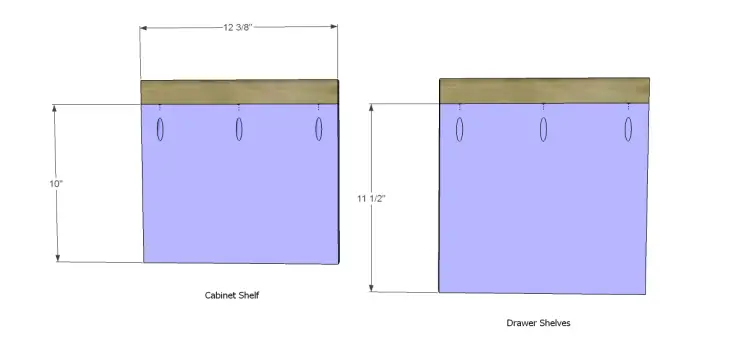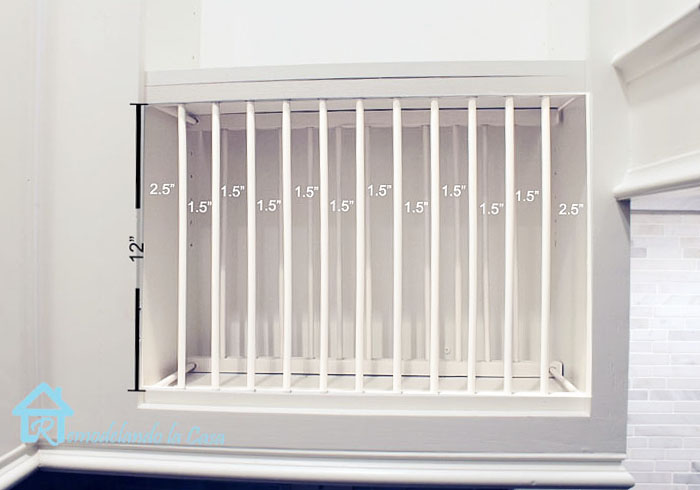Understanding Plate Rack Cabinets

Plate rack cabinets are essential storage solutions for kitchens and dining areas, designed specifically to hold and organize plates, bowls, and other flatware. They offer a practical and efficient way to keep your dishes clean, dry, and readily accessible.
Benefits of Using Plate Rack Cabinets
Plate rack cabinets provide numerous benefits for storing dishes, making them a valuable addition to any kitchen.
- Space Optimization: Plate rack cabinets utilize vertical space effectively, maximizing storage capacity while minimizing floor space requirements. This is particularly beneficial in smaller kitchens or areas with limited counter space.
- Improved Organization: Plate rack cabinets offer a dedicated and organized space for storing plates, bowls, and other flatware. This helps to prevent clutter and makes it easier to find what you need quickly.
- Enhanced Hygiene: By elevating dishes above the countertop, plate rack cabinets prevent them from coming into contact with dust and debris, maintaining hygiene and preventing contamination.
- Easy Access: Plate rack cabinets often feature adjustable shelves or compartments, allowing you to customize the storage space to accommodate different sizes of plates and bowls. This ensures easy access and retrieval of your dishes.
- Protection from Damage: Plate rack cabinets can be made from sturdy materials such as wood, metal, or plastic, offering protection from accidental bumps and scratches. This helps to extend the lifespan of your dishes and maintain their aesthetic appeal.
Types of Plate Rack Cabinets
Plate rack cabinets come in a variety of styles to suit different kitchen layouts and storage needs.
- Freestanding Plate Rack Cabinets: These cabinets are independent units that can be placed anywhere in the kitchen, providing flexibility in placement. They are often available in different sizes and designs to complement various kitchen styles.
- Wall-Mounted Plate Rack Cabinets: These cabinets are mounted directly to the wall, saving valuable floor space and offering a sleek and modern aesthetic. They are typically smaller in size but can still accommodate a significant amount of dishes.
- Cabinet-Style Plate Rack Cabinets: These cabinets are integrated into existing kitchen cabinetry, providing a seamless and cohesive look. They offer a more permanent solution and can be customized to match the style and finish of the surrounding cabinetry.
Planning Your Plate Rack Cabinet: Plate Rack Cabinet Plans

Creating a plate rack cabinet requires careful planning to ensure it meets your specific needs and fits seamlessly into your kitchen space. You’ll need to consider several factors to ensure you create a cabinet that’s both functional and aesthetically pleasing.
Factors to Consider When Designing Your Plate Rack Cabinet
Before you begin building your plate rack cabinet, it’s essential to consider the following factors:
- Space Available: Measure the available space in your kitchen where you intend to place the cabinet. Determine the maximum width, depth, and height that can accommodate the cabinet without obstructing walkways or other appliances.
- Desired Capacity: Consider the number of plates you need to store and the size of the plates. Determine the number of shelves and their spacing to ensure adequate storage for your plates.
- Style: Choose a style that complements your kitchen’s overall design. You can opt for a traditional, modern, or rustic style.
- Budget: Determine a budget for the project. This will help you choose materials and construction methods that fit your financial constraints.
Choosing the Right Materials
The choice of materials for your plate rack cabinet will significantly influence its durability, aesthetics, and cost.
- Wood: Wood is a popular choice for plate rack cabinets due to its natural beauty and versatility. It’s available in various species, each with unique characteristics in terms of grain, color, and durability. Popular choices include oak, maple, cherry, and pine.
- Metal: Metal, particularly stainless steel, is a durable and hygienic option for plate rack cabinets. It’s resistant to rust and moisture, making it suitable for kitchens with high humidity.
- Plastic: Plastic is a lightweight and affordable material for plate rack cabinets. It’s available in various colors and styles and is easy to clean. However, plastic may not be as durable as wood or metal.
Methods for Constructing a Plate Rack Cabinet
You have two primary options for constructing your plate rack cabinet:
- Using Pre-Cut Kits: Pre-cut kits provide all the necessary components, including wood panels, hardware, and instructions, to assemble the cabinet. These kits simplify the construction process and are suitable for beginners.
- Building from Scratch: Building from scratch allows for greater customization and control over the design and materials used. However, it requires more woodworking skills and time.
Building Your Plate Rack Cabinet

Now that you have a solid plan for your plate rack cabinet, it’s time to bring your vision to life! This section will guide you through the process of building your cabinet, providing a detailed list of materials, tools, and step-by-step instructions.
Materials and Tools
Having the right materials and tools is crucial for a successful project. Here’s a comprehensive list of what you’ll need:
- Wood: Choose a sturdy wood like plywood, MDF, or hardwood for the cabinet’s structure. The thickness should be sufficient to support the weight of your plates.
- Screws: Use wood screws of appropriate length and diameter for assembling the cabinet frame and attaching shelves.
- Wood glue: Wood glue helps strengthen joints and ensures a secure bond between wood pieces.
- Finishing materials: This includes paint, stain, varnish, or other finishes of your choice to protect the wood and enhance its appearance.
- Hardware: This includes hinges, knobs, drawer slides, and any other hardware you need for your cabinet’s functionality.
- Plate rack: Choose a plate rack that fits the size and style of your cabinet.
- Measuring tape: For accurate measurements of the cabinet and its components.
- Level: To ensure the cabinet is built level and stable.
- Saw: A circular saw or jigsaw for cutting wood to size.
- Drill: For drilling pilot holes and attaching hardware.
- Screwdriver: For driving screws into the wood.
- Sandpaper: For smoothing rough edges and preparing the wood for finishing.
- Clamps: To hold wood pieces together while gluing or attaching hardware.
Step-by-Step Building Instructions, Plate rack cabinet plans
Building a plate rack cabinet involves a series of steps that require careful attention to detail. Here’s a detailed guide:
- Cut the wood: Using your saw, cut the wood pieces for the cabinet frame, shelves, and back panel according to your design plans.
- Assemble the frame: Join the cabinet frame pieces together using wood glue and screws. Ensure the frame is square and level using a level and clamps.
- Attach the back panel: Secure the back panel to the frame using screws or nails.
- Install the shelves: Cut the shelf pieces to size and attach them to the frame using screws or shelf brackets. Ensure the shelves are level and evenly spaced.
- Install the plate rack: Mount the plate rack inside the cabinet according to the manufacturer’s instructions.
- Attach the hardware: Install hinges, knobs, drawer slides, and any other hardware needed for the cabinet’s functionality.
- Finish the cabinet: Sand the cabinet’s surfaces smooth and apply your chosen finish.
Tips for Stability and Functionality
A well-built plate rack cabinet should be stable and functional. Here are some tips to ensure success:
- Use strong wood: Choose sturdy wood for the cabinet frame and shelves to support the weight of your plates.
- Secure joints: Use wood glue and screws to create strong joints that won’t come apart.
- Level the cabinet: Ensure the cabinet is level and stable before attaching the shelves and plate rack.
- Choose the right hardware: Use sturdy hinges, knobs, and drawer slides that can handle the weight and use of the cabinet.
- Measure carefully: Accurate measurements are crucial for a well-fitting cabinet.
- Plan for access: Ensure the cabinet has adequate access for placing and removing plates.
- Consider the weight: Choose a plate rack that can handle the weight of your plates.
Plate rack cabinet plans offer a classic way to display and store your treasured china, but if you’re looking for a more elegant and antique aesthetic, consider incorporating elements of a small antique cabinet with glass doors into your design.
The intricate details and charming patina of an antique cabinet can complement the rustic charm of a plate rack, creating a unique and captivating focal point in your kitchen or dining room.
If you’re looking for a stylish and practical way to store your dishes, consider incorporating a plate rack cabinet into your kitchen design. These cabinets offer a unique and efficient way to display and access your dinnerware. For a more modern aesthetic, you might explore the bjursta glass door cabinet , which can be customized to showcase your favorite plates while adding a touch of contemporary flair.
When planning your plate rack cabinet, remember to factor in the size and weight of your dishes to ensure a sturdy and functional design.
